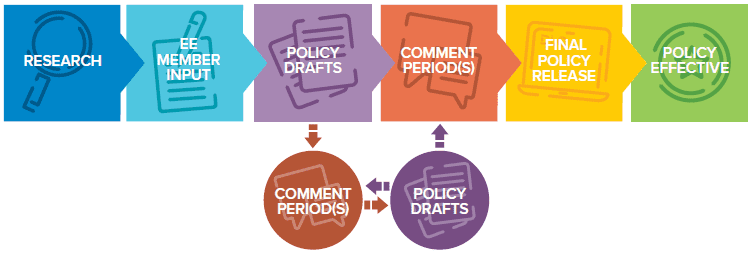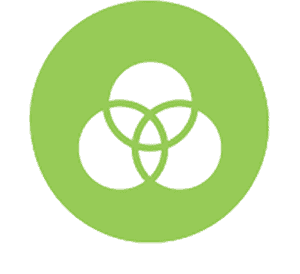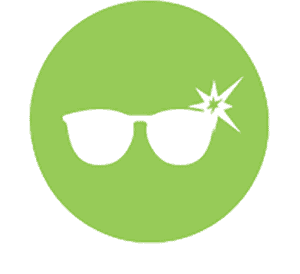This website uses cookies so that we can provide you with the best user experience possible. Cookie information is stored in your browser and performs functions such as recognising you when you return to our website and helping our team to understand which sections of the website you find most interesting and useful.

While the final transition to the DLC’s Solid-State Lighting (SSL) Technical Requirements V5.1 on July 1, 2022 may have caught some stakeholders by surprise, the policy has actually been a long time coming – and worth the wait.
Four years in the making, V5.1 is designed to promote products that maximize energy savings and user benefits by requiring products on the SSL Qualified Products List (QPL) to report more detailed performance metrics that contribute to lighting quality and functionality. The now fully implemented policy tracks with industry trends such as the use of warmer CCTs, demand for TM-30 and R9 reporting in addition to CRI, dimmability to enable a variety of control strategies, and controls integration.
The DLC first released V5.0 on January 29, 2019 as a conceptual draft concentrated on updates to address concerns about lighting quality and counteract the trend of efficacy at the expense of quality. Based on best practices for lighting application and current research, the DLC team considered aspects of light that impact productivity, performance, comfort, aesthetics, mood, safety, health, and wellbeing. SSL V5.0 Draft 1 included proposals focusing on quality aspects such as flicker, color quality, and light distribution (to avoid glare). In addition, the draft policy proposed going beyond energy savings from luminaire efficacy alone to include provisions meant to ensure savings from light distribution that is appropriate and efficient for the application and through controllability (via dimming, integral controls, and compatibility).
These considerations and research went deeper and broader than any previous technical requirements development effort. The draft policy and informational webinars that ensued noted specific rationale for each proposed change in V5.0/5.1, including:
- Efficacy increase. Based on research conducted by the DLC Tech team and input from industry stakeholders, the increase was set at a more conservative level than previous version updates due to the slower pace of efficacy improvement and potential for negative impact on quality and costs.
- Quality of light, including color quality impacts, light distribution, and discomfort glare were considered, as these all directly influence several desired outcomes, including task performance and ability to recognize differences quickly and accurately; occupant safety to distinguish color-coded messaging and information and provide visibility for navigation and obstacle detection; and aesthetic impact and wellbeing in experiencing visual comfort and supportive atmosphere – a critical consideration in post-COVID employee retention efforts. SPDx reporting is also required in V5.1, which not only provides better accuracy for evaluating products, but enables calculations from this data which could be used in the future to report additional metrics instead of requiring resubmission and potentially re-testing of the product.
- Controllability to enable additional energy savings was a key consideration, with dimmability deemed a necessity. LED products are inherently dimmable and those installed today will be operational for approximately 10 or more years. If controls are not part of today’s installs, it is extremely unlikely that they will be added until the next replacement, with potential savings stranded until then. Also, if programmed properly, integrated controls ensure compatibility between luminaire and control and enable control savings from day one.
Additionally, the DLC team initially considered including flicker due to its impact on visual comfort; interference with barcode scanners, sensors, and video feeds; potential health impacts for those with sensitivities; and safety concerns in industrial work environments, but ultimately determined not to include it in the final requirements due to lack of industry alignment and standards for flicker performance. Similarly, the original proposal included reporting considerations that supported industry efforts to encourage health-conscious design, such as reporting of SPD to allow disclosure of specific spectral properties (e.g. 460-520 nanometers), one of the factors that can be considered by specifiers to determine suitability for specific applications to impact daytime alertness and support circadian wellbeing. This disclosure was dropped from the final requirements due to feedback from stakeholders.
As with all DLC technical requirements, a robust stakeholder input process ensured that the development of SSL V5.1 reflected an array of lighting industry perspectives. Our process involves multiple steps including research and issuance of a draft set of technical requirements with public webinars to clearly describe the proposed changes and the rationale for considering them. The DLC typically issues at least two draft versions, each with a six-week public comment period. Every comment received is considered and the team always seeks to ensure that the changes deliver improvements to performance, align with industry standards and practices, and differentiate products that meet the new requirements – while considering the burden or expense on listing manufacturers.

The DLC Stakeholder Input Process
So, what did make it into the final version of SSL V5.1 released on February 14, 2020? Here are the key advantages that the fully transitioned QPL incorporates for listed products:

Controllability requirements to enable connected lighting
- Almost all products (99.4%) are now dimmable, enabling additional strategies to save energy.
- Manufacturers must report on integrated controls sensors and capability, as well as available wired and/or wireless control communication protocols so that users can more easily identify products with these features and capture additional energy savings.

Color performance (spectral quality) requirements
- Expanded CCT range to allow products from 2200-6500 Kelvin. This includes lower (warmer) CCTs that are gaining in popularity with users and were previously not included.
- Tighter CCT tolerances are required for Premium products to help ensure that the color of light installed matches user expectations.
- Color rendition requirements allow both CRI and TM-30 for qualification and include reporting of R9 and Rcs,h1 values (how well it renders reds) which improves the usefulness of reported color data.
- V5.1 requires spectral power distribution (SPD) reporting which which, as noted above, helps reduce future testing burden on manufacturers by enabling use of calculations to report on emerging metrics rather than requiring update applications. While SPD is not being disclosed publicly at this time, specifiers obtain SPD data from manufacturers to determine the spectral composition of the light from luminaires to ensure that the right colors are present for specific applications.
- Color maintenance requirements support improved chromaticity consistency over time to avoid surprising color shifting.

Light distribution and discomfort glare mitigation
- V5.1 added beam angle requirements for linear replacement lamps to ensure light is directed where it’s needed, and a previous requirement for testing in luminaire was removed, which eases burden on manufacturers and test labs.
- Backlight, Uplight, Glare (BUG) ratings are now reported for exterior lighting products, allowing QPL users to more easily evaluate characteristics needed for comparison and selection and to avoid putting light where it is not needed.
- Light distribution is now evaluated against Unified Glare Rating (UGR) discomfort glare thresholds for certain Premium indoor product groups that were identified as previously sacrificing glare control for efficacy.

Average efficacy increase of 12 percent
- A conservative but significant increase to balance energy savings, product cost, and quality of light
- DLC Premium under V5.0 includes a 15 lumen per watt increase over standard
Now fully transitioned, the QPL is populated with products that are current, having been updated in the past two years. Many obsolete products (60 percent of which were listed over four years ago) have been removed. The DLC looks forward to adding the many updated and newly designed products produced by innovative lighting manufacturers to the SSL QPL, which now highlights products with attributes that contribute to higher performing projects and enable controls at the time of installation to capture more energy savings.
Manufacturers may submit new V5.1 applications (including those to update delisted V5.0 products to V5.1) at any time. More information about SSL V5.1, including manufacturer and industry guidance and resources, is available here.
The DLC is grateful to our stakeholders for collaborating with us and for taking time to provide invaluable feedback throughout the transition to V5.1 in the midst of a global pandemic that fueled an uncertain industry landscape. Thank you for continuing to help us take these important steps to capture energy savings and prioritize decarbonization goals.
© 2023 DesignLights Consortium. The DesignLights Consortium is a project of Efficiency Forward, Inc., a non-profit 501(c)3 organization. Privacy Policy Terms of Use
